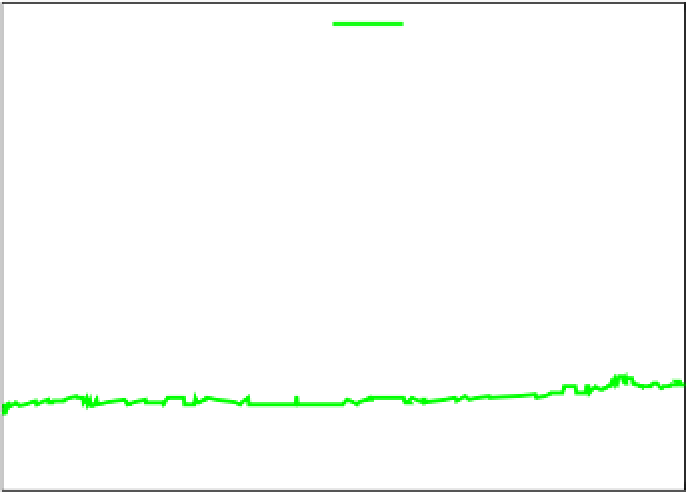Biomedical Engineering Reference
In-Depth Information
9.4.3 Flight Test
curvature indicates a roll angle of less than 2° in
each case.
The ocelli-based autopilot was given control of
the aircraft for periods of approximately 10 s,
and the inputs and outputs were logged. The
control system commanded aileron deflection
proportionally to the sensed differences between
the spectrally opponent signal from the photo-
diodes. A transient occurred on all photodiode
responses at approximately 0.25 s at the transi-
tion between the pilot and the autopilot.
The raw unscaled data from the photodiodes
in
Figure 9.20
show stable green-channel out-
puts and less stable ultraviolet-channel outputs.
This is due to the already observed lack of con-
trast in the green band between sky and ground
on clear days (
Figure 9.2
). The control system
held the difference between left and right oppo-
nent signals in
Figure 9.21
at low levels.
Figure 9.22
shows a series of GPS trajectories
over the horizontal plane from the aircraft under
control of the ocelli. The estimated radius of
9.5 OPTICAL-FLOW CONTROL OF
HEIGHT AND COURSE
Navigation requires more than holding a
heading and maintaining an upright attitude.
Cross-wind must be compensated by adjusting
heading, and the ground must be avoided for
most of the flight.
9.5.1 Optical Flow
Apart from the spectral and polarization aspects
of insect vision, there is also optical flow.
Humans sense this aspect of vision as well, but
flying insects are unusually dependent on it.
Optical flow
is the angular motion of the visual
field as perceived by an imaging device. A mov-
ing platform observes the relative motion of the
5
Green right lateral
Green left lateral
UV right lateral
UV left lateral
4.5
4
3.5
3
2.5
2
0
2
4
6
8
10
12
14
Time (s)
FIGURE 9.20
Raw data from the four photodiodes of interest while the autopilot commanded the control system. Noise
levels from the amplifier were of the order of 2 bits in 16 bits; thus observed level changes are predominantly driven by
motion of the aircraft and changes in the environment.




















